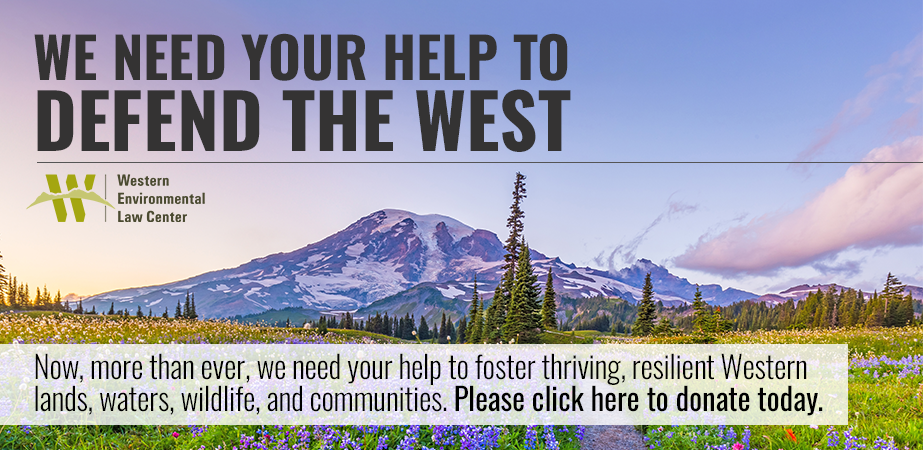On the same day as the Trump administration announced the elimination of 3.4 million acres of critical habitat for the northern spotted owl, the U.S. Fish and Wildlife Service’s top owl expert formally objected to the decision in a document recently unearthed as part of ongoing litigation. The Jan. 15 memorandum, written by Oregon State Office Supervisor for the U.S. Fish and Wildlife Service Dr. Paul Henson, found that “it is reasonable to conclude that [the reduction in critical habitat] will result in the extinction of the [northern spotted owl].” The Henson memo references other documents, as yet unreleased, indicating this was not the first warning of the dire consequences of the proposed rule. On Dec. 9, 2020, Dr. Henson likewise warned, “Most scientists (myself included) would conclude that such an outcome will, therefore, result in the eventual extinction of the listed subspecies.”
“We now know what we suspected all along, which is that the Trump administration actively disregarded the best available science when making wildlife and land management decisions,” said Susan Jane Brown, attorney at the Western Environmental Law Center. “Seeing in writing that callous disregard for the continued existence of this iconic species is sobering, to say the least, and revolting at worst. This is a clear example, and unfortunately not the first, of the prior administration giving out gifts to political allies rather than following the law. Thankfully, experts at the U.S. Fish and Wildlife Service stood up for the northern spotted owl, and WELC and our clients are in court to ensure that the best available science rules the day.”
“We suspected that political favors, not science, guided the last-minute rulemaking change by the Trump administration,” said Tom Wheeler, executive director of the Environmental Protection Information Center (EPIC). “Now we know that it was made clear to the Trump administration that its planned cuts to northern spotted owl critical habitat would result in the owl’s extinction. They knew but didn’t care.”
The Henson memo was written in response to a separate memo, signed by then-U.S. Fish and Wildlife Service Director Aurelia Skipwith, which outlined the legal and scientific justifications for the reduction in critical habitat. The Jan. 7, 2021 memorandum was reportedly not provided to Dr. Henson until the day before the formal rulemaking, making a more timely objection impossible.
This is not the first time that political appointees have personally inserted themselves into controversial decisions. In 2007, Julie MacDonald, then deputy assistant secretary for Fish and Wildlife and Parks at the Department of the Interior, was found to have manipulated decisions and agency science to benefit the Bush administration’s political agenda. The Interior Department under Interior Secs. Ryan Zinke and David Bernhardt have also been subject to a number of high-profile ethics scandals. Given this history, after the Jan. 15 critical habitat rule, eight Western lawmakers requested a formal investigation as to whether any government official improperly “inserted themselves into the scientific process in order to achieve preferred policy outcomes….”
The Biden administration has paused implementation of the Trump-era critical habitat rule until December, signaling its intent to formally reverse or revise the rule. Meanwhile, the timber industry has already filed suit against the delayed implementation and Congressional Republicans are lining up behind the timber industry, urging the immediate implementation of the Trump rule.
General background:
Timber harvesting in the Northwest has resulted in a widespread loss of spotted owl habitat across its range, which was a main reason for listing the species in 1990. Owls depend on habitat provided by the dense canopy of mature and old-growth forests; unfortunately, those forests are still a target for logging throughout the bird’s historic range. The northern spotted owl is already functionally extinct in its northernmost range, with only one recognized breeding pair left in British Columbia.
In response to a court order, in 1990 the Service listed the northern spotted owl as threatened, citing low and declining populations, limited and declining habitat, competition from barred owls, and other factors in the bird’s plight. Even after its listing, northern spotted owl populations have declined by 70%, and the rate of decline has increased.
In response to a petition filed by the Environmental Protection Information Center, in December 2021, the U.S. Fish and Wildlife Service determined that “uplisting” the owl from “threatened” to “endangered” was “warranted but precluded by higher priority actions.”
Contacts:
Susan Jane Brown, Western Environmental Law Center, gro.w1752293300alnre1752293300tsew@1752293300nworb1752293300, 503-914-1323
Tom Wheeler, Environmental Protection Information Center, gro.a1752293300inrof1752293300ilacd1752293300liw@m1752293300ot1752293300, 206-356-8689

